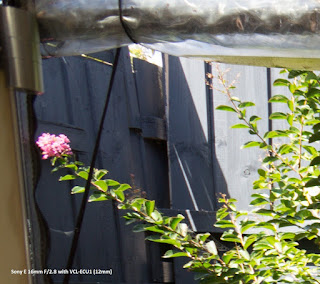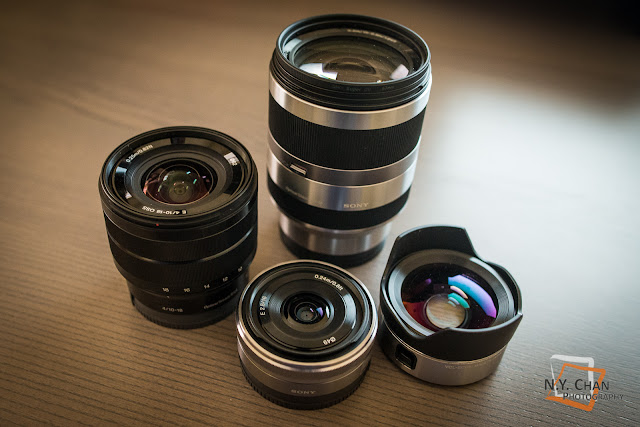More Christmas displays at Melbourne Central, 2013.
Monday, December 16, 2013
Melbourne Christmas Continued
Labels:
Christmas,
Decorations,
Melbourne Central
Location:
Melbourne VIC, Australia
Monday, December 2, 2013
A Melbourne Central Christmas
Christmas installations at Melbourne Central. Melbourne Central is a large shopping centre at the heart of Melbourne City. The theme of the decorations this year is "Give", and in particular the focus is on the non-material gifts you can give at Christmas.
Labels:
Art,
Christmas,
Decorations,
Installation,
Lights,
Melbourne Central
Location:
Melbourne VIC, Australia
Wednesday, November 20, 2013
Black Cockatoo and His Pine Cone
The yellow-tailed black cockatoo is a bird native to south east Australia.The majority of their diet is made up of seeds and wood grubs. Cockatoos are similar to parrots, but usually larger. The name cockatoo originates from the Indonesian name for these birds, kakatuwah.
Location:
Melbourne VIC, Australia
Monday, November 4, 2013
Maroondah Reservoir
Maroondah Reservoir is a water reservoir to the east of Melbourne. It captures water from the protected surrounding natural catchment, and is one of the reservoirs responsible for supplying water to Melbourne.
 |
| The Spillway from Maroondah Reservoir |
Labels:
Healesville,
Maroondah,
Nature,
Panorama,
Water
Location:
Melbourne VIC, Australia
Monday, September 9, 2013
The 'Brown Brothers' Rainbow
A rainbow selection of wines from Brown Brothers, a winemaker founded in Milawa, Victoria, Australia.
Labels:
Bottles,
Brown Brothers,
Colour,
Wine
Location:
Milawa VIC 3678, Australia
Tuesday, August 20, 2013
Tuesday, August 13, 2013
Tuesday, August 6, 2013
Rotorua City and Lake Rotorua Sunset
Location:
Rotorua, New Zealand
Tuesday, July 30, 2013
Seagulls by the Princes Walk
Labels:
Birds,
Nature,
Seagull,
Yarra River
Location:
Melbourne VIC, Australia
Sunday, June 23, 2013
The Supermoon
Supermoon in June 2013. The moon's orbit is actually slightly elliptical, and the moon appears larger when the moon is closer to earth.
Location:
Melbourne VIC, Australia
Tuesday, June 18, 2013
The Light in Winter 2013
The Light in Winter is an annual festival held during winter in Melbourne each year. The festival celebrates winter with wonderful artistic sculptures, usually best enjoyed at night when the sculptures become illuminated.
This year's key attraction is The Helix Tree, designed by Melbourne-based illumination designer Bruce Ramos. The Helix Tree is a 13m high steel structure with interactive illumination that responds to sound. The tree varies in colour and intensity based on the volume and pitch of the sound it hears.
Various choirs from around Melbourne have been invited to sing under the tree and demonstrate this interactive display of sound and light.
Also see last year's Light in Winter: Close Encounters 2012
This year's key attraction is The Helix Tree, designed by Melbourne-based illumination designer Bruce Ramos. The Helix Tree is a 13m high steel structure with interactive illumination that responds to sound. The tree varies in colour and intensity based on the volume and pitch of the sound it hears.
Various choirs from around Melbourne have been invited to sing under the tree and demonstrate this interactive display of sound and light.
Also see last year's Light in Winter: Close Encounters 2012
Labels:
Bruce Ramos,
Federation Square,
Illumination,
Light,
Light in Winter,
Night,
Sculpture
Location:
Melbourne VIC, Australia
Tuesday, June 11, 2013
Sleepy Cuddly Koalas
Sleepy Koala sitting on a tree. Koalas can sleep up to 20 hours a day, with their diet consisting mainly of eucalyptus leaves.
Monday, May 27, 2013
Hong Kong Highways
Labels:
Architecture,
Buildings,
Hong Kong,
Road
Location:
Hong Kong
Wednesday, May 22, 2013
Friday, April 12, 2013
Yarra Southbank
Labels:
Melbourne,
Nature,
People,
Yarra River
Location:
Melbourne VIC, Australia
Saturday, April 6, 2013
Luna Park
Labels:
Long Exposure,
Luna Park,
Melbourne,
Night,
St Kilda
Location:
Melbourne VIC, Australia
Friday, March 22, 2013
Street Artist
Labels:
Graffiti,
Hosier Lane,
Laneways,
Melbourne,
Street Art
Location:
Melbourne VIC, Australia
Wednesday, March 13, 2013
Saturday, March 9, 2013
The Urban Coffee Farm
The Urban Coffee Farm is a conceptual coffee farm built with terraces made from shipping pallets, crates and containers, as part of the Melbourne Food and Wine Festival.
The design of the coffee farm transplants the exotic coffees originating from all over the world to Melbourne’s CBD, with around 120 coffee plants growing in the terraces built at Queensbridge Square in Southbank, Melbourne.
A variety of Melbourne's top coffee shops and baristas will share their expertise at the Urban Coffee Farm, with various coffee samplers and workshops on coffee.
The design of the coffee farm transplants the exotic coffees originating from all over the world to Melbourne’s CBD, with around 120 coffee plants growing in the terraces built at Queensbridge Square in Southbank, Melbourne.
A variety of Melbourne's top coffee shops and baristas will share their expertise at the Urban Coffee Farm, with various coffee samplers and workshops on coffee.
Labels:
Coffee,
Festival,
Melbourne Food and Wine,
Queensbridge Square,
Southbank,
Urban Coffee Farm
Location:
Melbourne VIC, Australia
Sunday, March 3, 2013
(Chinese) New Year in (Hong Kong) Times Square
Labels:
Chinese,
Hong Kong,
New Year,
Times Square
Location:
Hong Kong
Saturday, February 16, 2013
Hong Kong Harbour
Victoria Harbour is the harbour that runs through the middle of Hong Kong, separating Hong Kong Island from Kowloon, the mainland. The night lights across the harbour are one of the most spectacular views in the world.
One of the tourist attractions running in Victoria Harbour is the traditional junk, a Chinese style of ship that was originally referenced in history as early as the Han Dynasty (as early as 200 A.D.). They have been evolved throughout Chinese history and used far across Asia.
Location:
Hong Kong
Saturday, February 9, 2013
Sony NEX 10-18mm Lens Shootout
Having recently obtained a Sony NEX E-mount 10-18mm F/4.0 wide angle zoom lens, I decided to do a bit of a shootout between it and other comparable lenses in my arsenal.
Pictured below is the 10-18mm F/4 mounted on a Sony NEX-7.
The lenses that it will be compared to today, are the:
Pictured below is the 10-18mm F/4 mounted on a Sony NEX-7.
The lenses that it will be compared to today, are the:
- Sony E-mount 18-200mm F/3.5-6.3 Super Zoom @ 18mm
- Sony E-mount 16mm F/2.8 Prime, with and without the VCL-ECU1 (0.75x converter)
18mm View - Full Scene
First up, the comparison at 18mm (or 16mm for the prime). Click on each photo for larger view.
At the full scene scale, there are some obvious differences. First up, of course the 16mm lens will be giving a slightly wider view. Both the 10-18mm and the 16mm give a pretty similar image, while the 18-200mm shows a lot more barrel distortion (where the centre of the photo appears to be bulging out). However, a clear winner in sharpness is also the 18-200mm, which is much more obvious in the cropped comparison below.
18mm View - Centre Crop
Below we look at a 100% crop near the centre of the frame.
The 10-18mm is a bit blurry, while both the 18-200mm zoom and the 16mm prime do a decent job at sharpness. The 16mm appears to be a little bit more crisp than the 18-200mm, but it's hard to judge whether this is actual sharpness, or rather the fact that things are a little bit smaller here (due to the 16mm POV compared to 18mm) making them appear sharper.
18mm View - Corner Crop
In a comparison of the 100% crop at the top-left corner, the 18-200mm has a significant edge in sharpness. Both the 10-18mm and the 16mm are completely blurry. Again, click on each photo for a larger view.
Here, I am especially impressed by the sharpness of the 18-200 super zoom. The leaves on the tree are sharp, and this is a 100% zoom on a 24 megapixel APS-C camera, which would be very demanding on a lens.
I'd also point out disappointment in the 10-18mm zoom, as the sharpness is even worse than the 16mm. I guess that while the 16mm is not known for its image quality, a prime lens is still easier to make than an ultra-wide zoom.
Also note that the 16mm is not cropped to the extreme corner like the other 2 lenses, since the overall image was wider and I wanted to crop to the same view.
12mm View - Full Scene
Next, let's look at the performance at the wider end, which is really the reason why anyone would buy the 10-18mm lens anyway. For obvious reasons, the 18-200mm superzoom is excluded from this part, so the comparison is limited to the 16mm F/2.8 with the VCL-ECU1 0.75x wide converter which gives an equivalent view of 12mm.
There doesn't seem to be a lot to separate out these two lenses when viewing the full scene at 1600 pixel wide scale (ie, resized for internet consumption). From my eye, I think there is an edge in sharpness for the 10-18mm over the 16mm + converter. This is apparent in the centre trees, and also the wooden deck. The 10-18mm at 12mm also appears to be a tiny bit wider than the 16mm with converter.
12mm View - Centre Crop
As above, we have a closer look with 100% crops in the centre of the frame and the top-left corner.
Not a lot to separate the two lenses at a centre crop, where most lenses tend to perform the best. I'd pick the 10-18mm as being the sharper of the two, but the differences are not hugely apparent.
12mm View - Corner Crop
If I had to choose a favourite, I'd go with the 10-18mm, but really there's very little to separate the two lenses at a 100% crop in the corner. The flower seems quite similar, but I'd argue that the leaves in the bottom right corner of the crop are sharper in the 10-18mm.
For the sake of completeness, here's also a shot of the same scene at 10mm on the 10-18mm zoom.
Conclusions
In conclusion, the 10-18mm wide angle zoom is not perfect optically, but when you want an ultrawide angle zoom lens native on a Sony NEX system, this is the only choice. The performance at the wide angle definitely beats the 16mm prime with wide converter, but that is a much cheaper alternative. At the 18mm focal length, the 18-200mm superzoom would be the obvious choice for sharpness.
However, I also find that when you're shooting at extreme wide angles, having a zoom is very handy. In this focal length range, a small change in focal length has a huge impact on your composition and framing, so I definitely prefer having the convenience of a zoom as well as being able to walk closer or further from the subject.
However, I also find that when you're shooting at extreme wide angles, having a zoom is very handy. In this focal length range, a small change in focal length has a huge impact on your composition and framing, so I definitely prefer having the convenience of a zoom as well as being able to walk closer or further from the subject.
Labels:
10-18mm F/4,
Comparison,
E-mount,
Impressions,
NEX,
NEX-7,
Review,
Shootout,
Sony,
Ultrawide,
Zoom
Subscribe to:
Posts (Atom)




























































